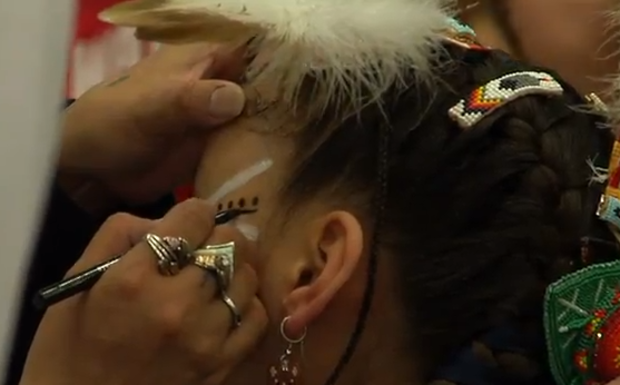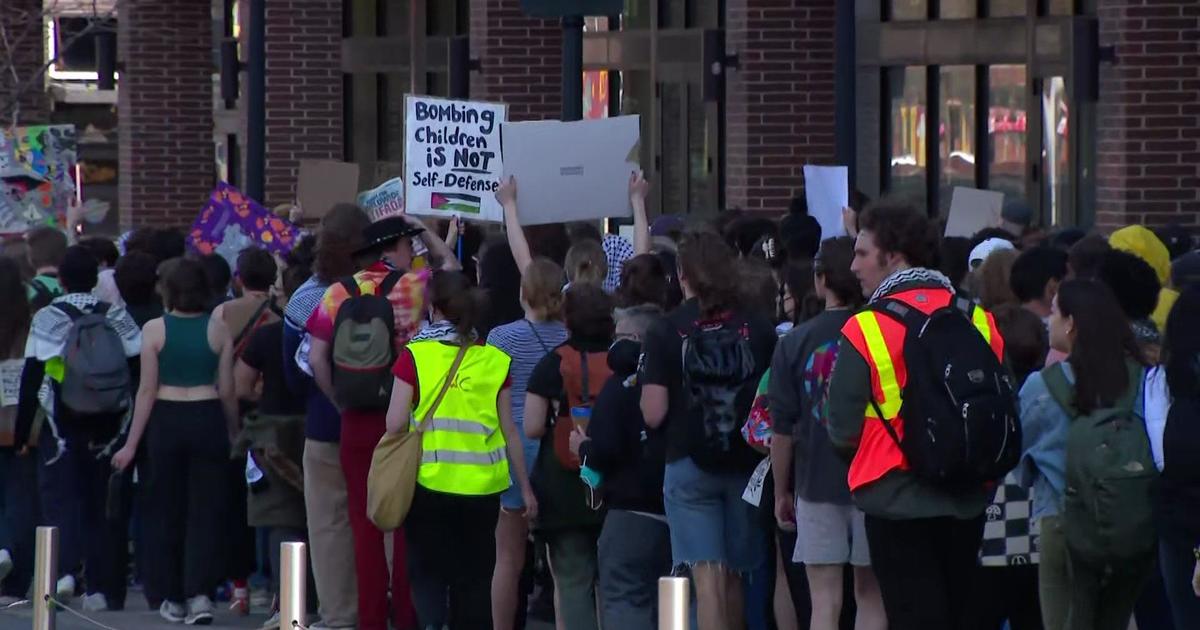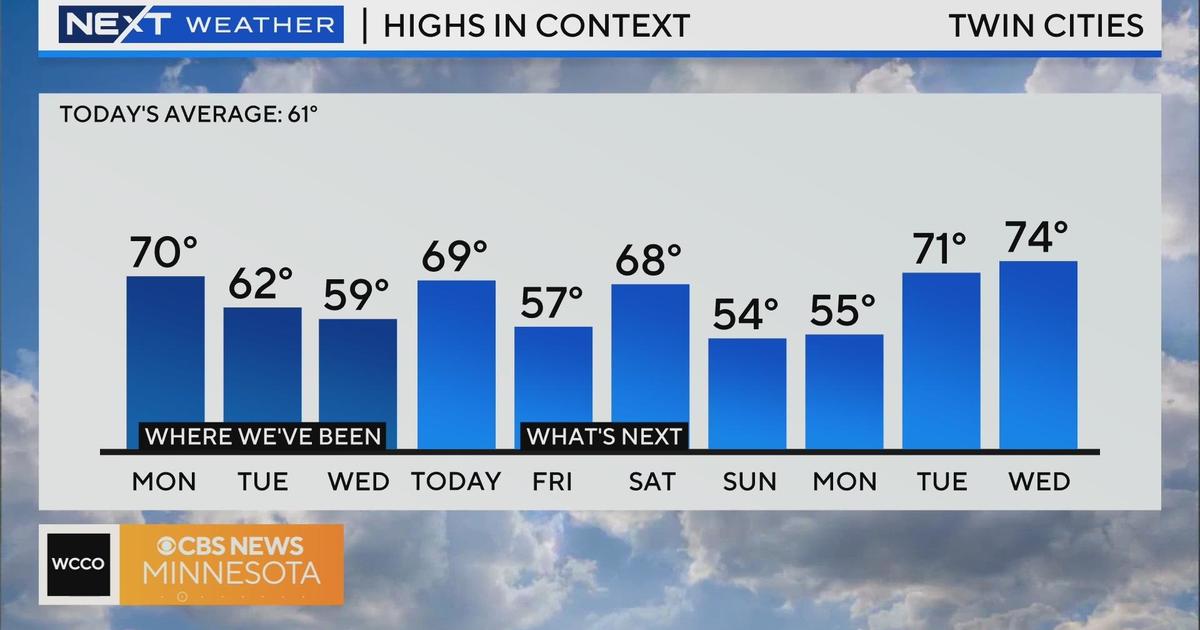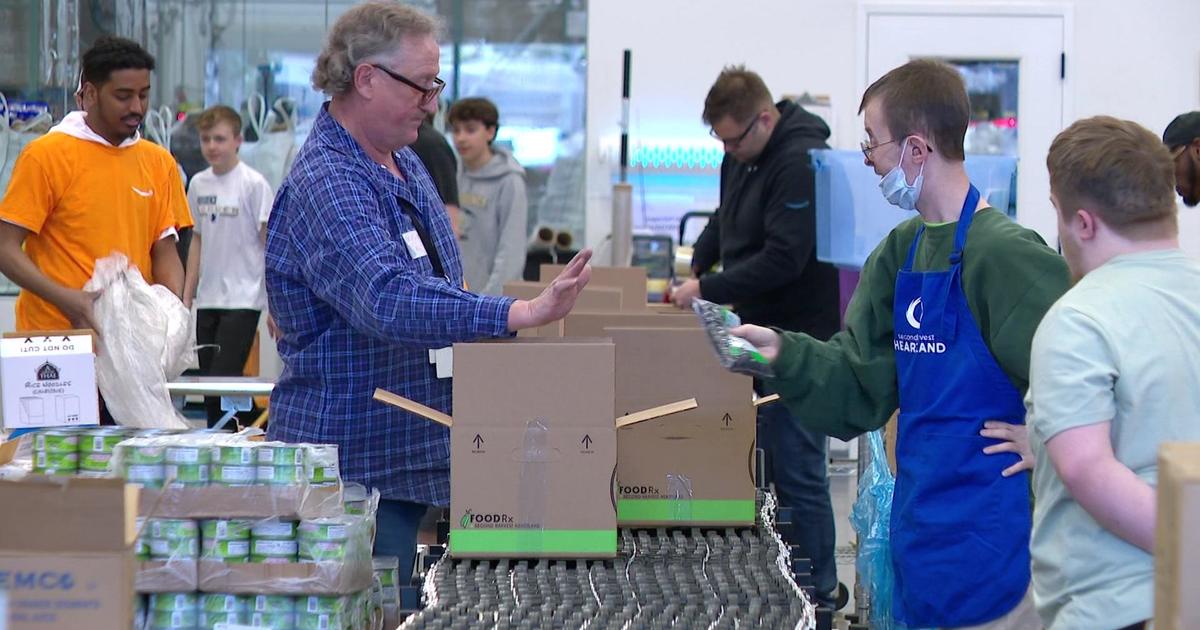Crunch Time For Minnesota Pow-Wows
By Ramona Marozas
MINNEAPOLIS (WCCO) -- A series of American Indian pow-wows are coming up in Minnesota and around the country. Summertime is pow-wow season bringing traditions to life. American Indian dancers, drummers and vendors usually travel from pow-wow to pow-wow across the country. Right now it's crunch time for Minnesota pow-wows.
This Weekend:
• Prairie Island Indian Community pow-wow happening on Friday the 15th -- Website // (952) 496-6109
• Bois Forte Band of Chippewa pow-wow happening on Friday the 15th, Saturday the 16th and Sunday the 17th -- Website // (218) 757-3261
• Fond du Lac Band of Lake Superior Chippewa pow-wow happening on Friday the 15th -- Website // (218) 878-7510
• Mille Lacs Band of Ojibwe pow-wow happening on Friday the 15th, Saturday the 16th and Sunday the 17th -- Website // (320) 532-4181
• White Earth Nation pow-wow happening on Friday the 15th, Saturday the 16th and Sunday the 17th -- Website // (218) 983-3285
June:
• Leech Lake Band of Ojibwe pow-wow happening on Friday the 22nd, Saturday the 23rd and Sunday the 24th -- Website // (218) 335-8200
July:
• Red Lake Nation pow-wow happening on Friday the 6th, Saturday the 7th and Sunday the 8th -- Website // (218) 679-5995
August:
• Shakopee Mdewakanton Sioux Community pow-wow happening on Friday the 17th, Saturday the 18th and Sunday the 19th -- Website // (952) 496-6109
• Upper Sioux Community pow-wow happening on -- Website // (320) 564-3853
• Grand Portage Band of Lake Superior Chippewa pow-wow happening on Friday the 3rd, Saturday the 4th and Sunday the 5th -– Website // (218) 475-2277
For more information on these pow-wows call the Minnesota Chippewa Tribal Executive Committee at (218) 335-8581.
More About Pow-Wows
"There are so many tribes here in the United States. It's important to realize the differences and similarities of each tribe," said Jim Knutson-Kolodzne who is a member of the Little River Band of Ottawa Indians. "There's 600 different cultures of American Indians here in the United States."
Speaking traditional languages in ceremonies is important and allows languages to persist. Prayers said at pow-wows are mostly said in American Indian languages.
WEB EXTRA: Pow-Wow Gallery
Ceremony
Before any dancing begins, a prayer is said and people respectfully remove their hats for a grand entry. The grand entry is an opening to the ceremony and the smell of burnt sage is strong, then the heartbeat of the drum echoes in a swirling circle reaching all corners of the building.
There's an arbor at the center, a ceremonial structure in the form of a giant dream catcher, which is danced around. The circle is a very important symbol in American Indian culture. Its meaning is really endless, representing the circle of life, the medicine wheel and drums.
There are also different types of drumming songs, some in American Indian languages, English and vocables. Vocables are made-up words that have no meaning but are still very powerful.
Just as there are different types of drumming songs, there are also different styles of dance. There are six styles of dance, three styles of men's dance and three styles of women's dance. The men's styles of dance are traditional, fancy and grass.
Most traditional dancers wear eagle feathers on their headdress, which is called a bustle. Their dance looks like they are out hunting for prey or in a battle. Fancy dancers' eagle feathers are colorful and they usually wear two bustles. They have to be very athletic to move on beat to a fast song and in good shape to wear two bustles. The bustles are made to look very colorful, detailed and attention grabbing.
In the oldest type of dance, the grass dance, dancers wear a lot of fringe and do not wear any bustles on their backs. Their movements are supposed to be fluid like grass and should look like grass blowing in the wind, according to American Indian Studies Professor at St. Cloud State University (SCSU) Jeanne Lacourt who is a member of the Menominee Indian Tribe of WI.
The dancers stomp as if flattening the grass in the prairie, which was done traditionally to make room for dances. It was the job of the grass dancer to dance the grass down so that people can gather. This tradition is still carried on today at some pow-wows, like the Lower Sioux Indian Community.
There are three different styles of women's dance. There is traditional, fancy shawl and jingle. The traditional women dancers wear buckskin or cloth such as satin or wool and usually are holding fans. They make subtle movements and carry their shawls. They bow, raise their hands or fans during honor beats. Honor beats are drum beats with special meaning.
The fancy shawl dancer wears a shawl over her shoulders. When describing the fancy shawl dance, "it's said they mimic the movements of a butterfly," said American Indian Studies Professor at the University of Minnesota and SCSU and the University of Minnesota, Darlene St. Clair, who is a member of the Lower Sioux Indian Community of Minnesota.
"Your dance is your prayer. Whatever your heart is, that's your dance, and your heartbeat is your drumbeat," said Ann Ette Lee who is a member of the Dakota Sioux of South Dakota. "Dancing is a sense of cultural pride and the pow-wow is rooted in ceremony."
American Indian dancers at the pow-wow call their garments either "regalia" or their "outfit." It may be considered offensive to refer to their regalia as costumes.
"Clowns wear costumes," says Michael Yeomans who is a member of the Cherokee and living in GA. "This is the dress of our forefathers and relatives."
Yesterday To Today
Traditionally there was no competition at the pow-wow, but nowadays there is judging on dancing, drumming and singing.
"I think competitions take a little away from the culture but it also draws more people in, so there's a positive and a negative to it," Yeomans said.
St. Clair said the drumming judging is based on how the song reaches and moves people. If people crowd and dance close to a drum it is an honor and means they are being pulled in by the music.
Another modern practice is royalty. There's now royalty like princesses who travel from pow-wow to pow-wow representing their tribe. Their chosen based on their character, knowledge of tribal history and community involvement.
"There's no such thing traditionally as princess," says Joe Whitehawk Sr. who is a member of the Dakota of MT. "The royalty came in with rodeos."




